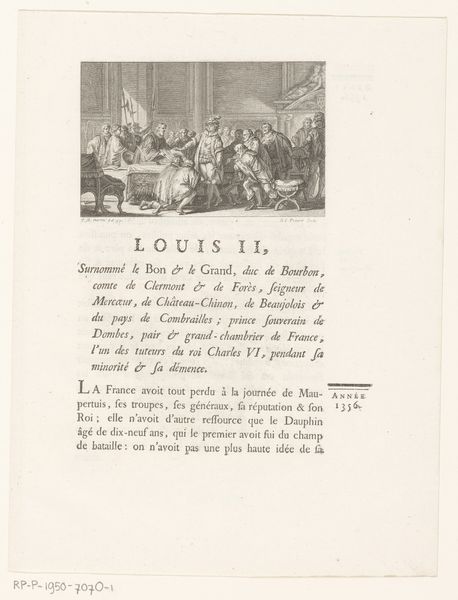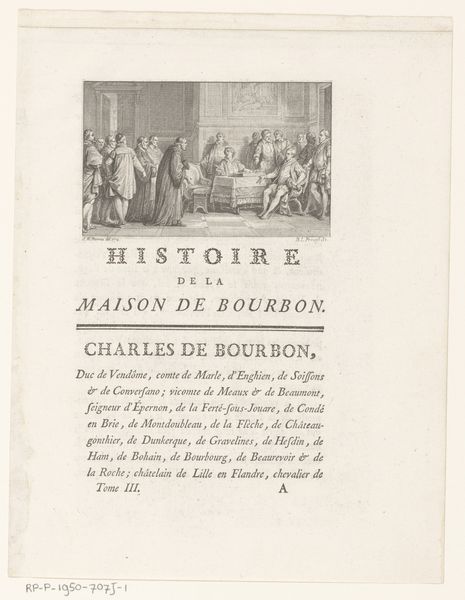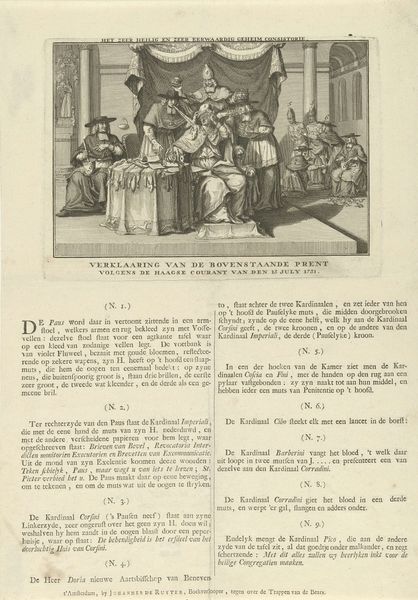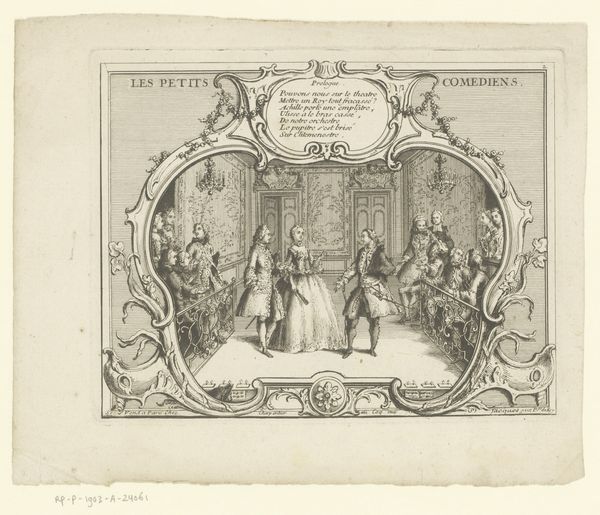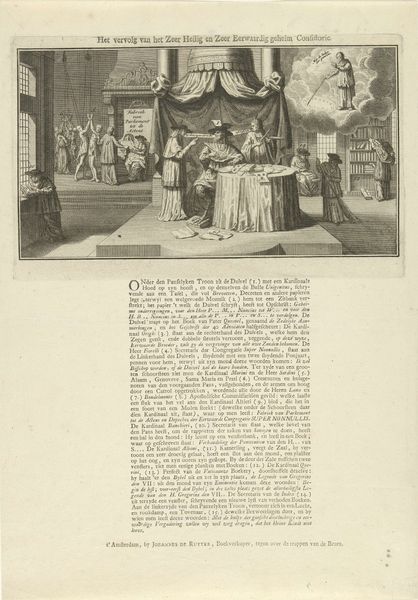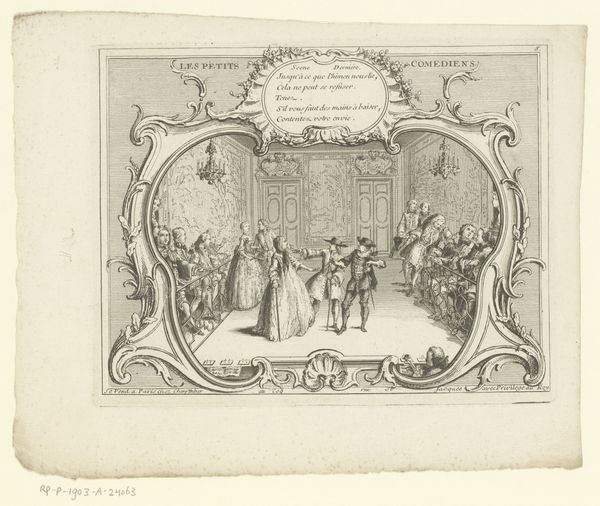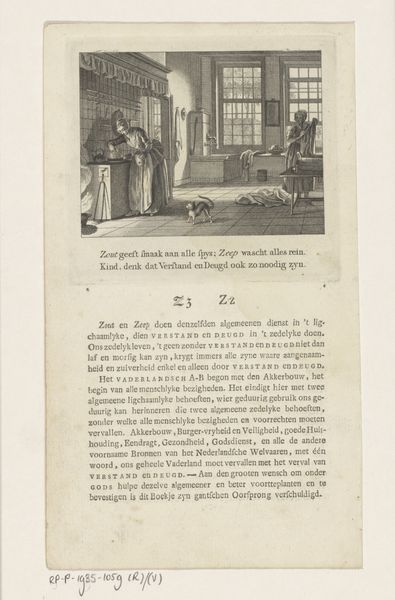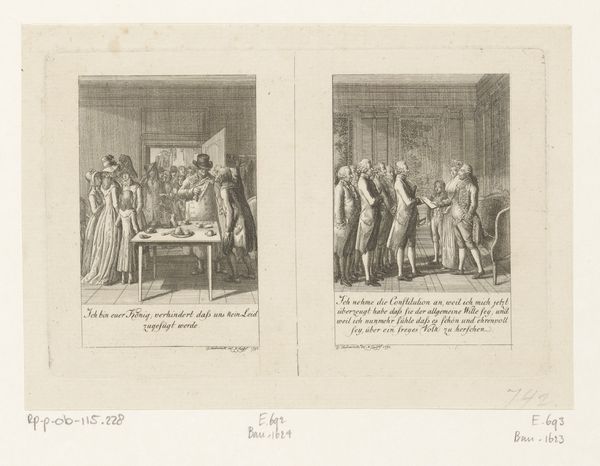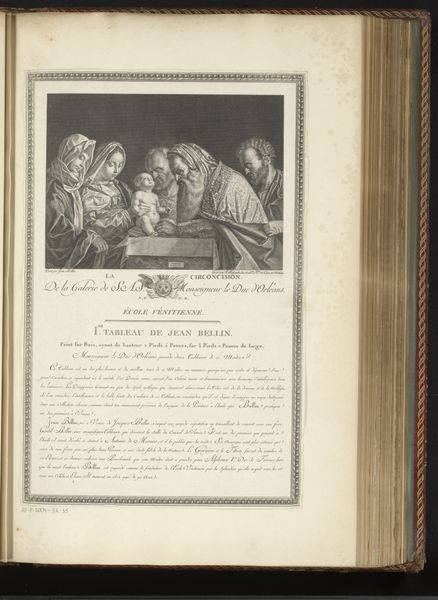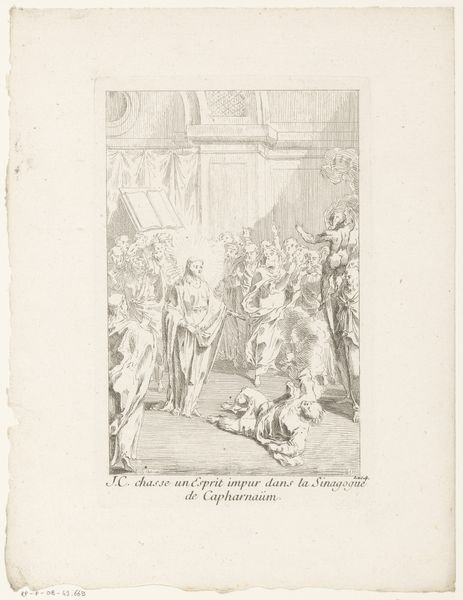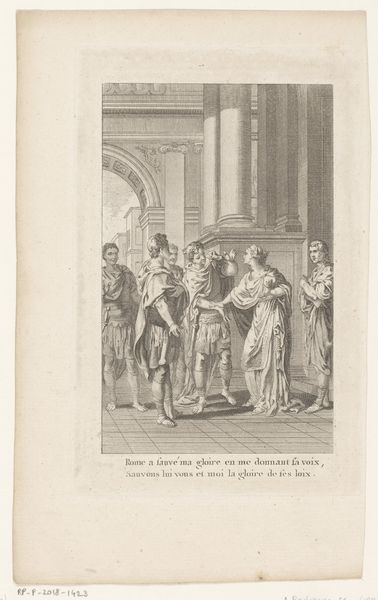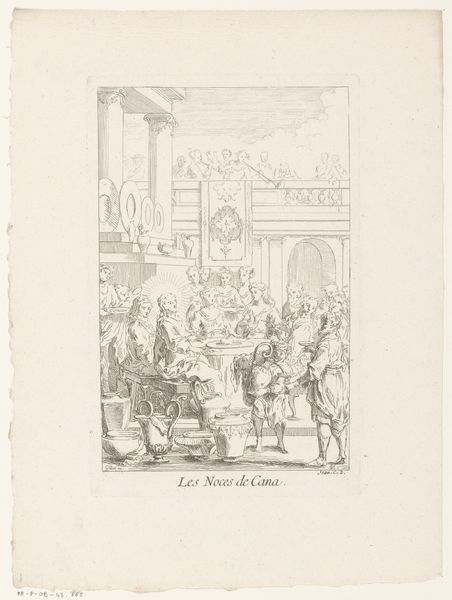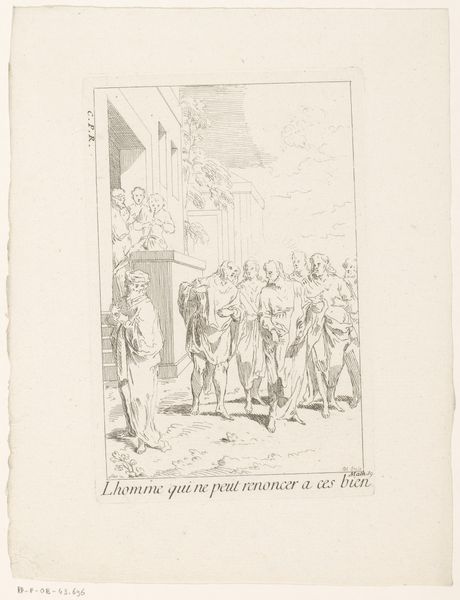
print, engraving
#
portrait
#
medieval
#
narrative-art
# print
#
old engraving style
#
historical photography
#
history-painting
#
engraving
Dimensions: height 251 mm, width 192 mm
Copyright: Rijks Museum: Open Domain
Curator: So, we have before us an engraving from 1776 titled "Aartsbisschop Charles II de Bourbon doopt een kind," depicting Archbishop Charles II de Bourbon baptizing a child. It feels like a glimpse into a very formal, almost theatrical, historical event. What strikes you about this work? Editor: The composition is really striking! It's so detailed for an engraving. The central placement of the baptismal font immediately draws the eye. How does this print reflect the broader artistic trends or societal values of its time? Curator: That's a key question. Though made in 1776, the scene evokes earlier periods, deliberately harking back to a perceived 'golden age' of the Bourbon dynasty and the power of the Church. Notice how the print functions almost as propaganda. It presents a vision of stability and divine right, particularly interesting considering the pre-revolutionary fervor brewing at that time. How does the choice of depicting a baptism contribute to this message? Editor: Hmm, so it’s less about religious piety and more about reinforcing social structures? The act of baptism itself symbolizes legitimacy and continuation... and the figures surrounding the Archbishop also emphasize order and status? Curator: Precisely. Consider where this print might have been circulated. Not among the peasantry, but amongst the elite. It’s a calculated presentation of power. The seemingly historical, yet carefully constructed image, promotes specific values at a time of immense social and political tension. It invites the question of how history itself is framed and manipulated to serve present needs. Does that connection between past and present make the print more or less relevant to our time? Editor: Definitely more! It makes me think about how images today are also used to shape our understanding of history and the current world. That's a powerful takeaway. Curator: Indeed. Analyzing it from a historical perspective truly unveils the artwork's deeper narrative about power, image-making and societal control.
Comments
No comments
Be the first to comment and join the conversation on the ultimate creative platform.
